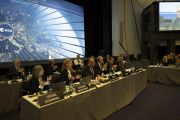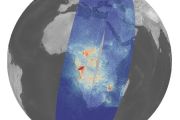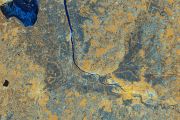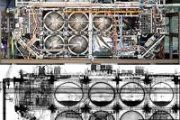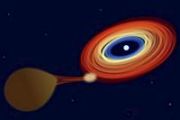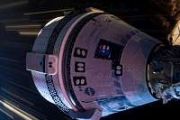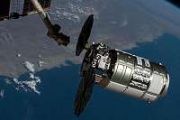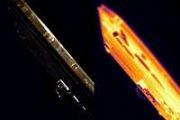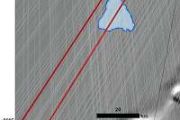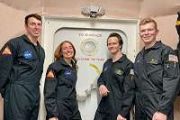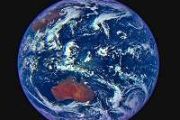
Copernical Team
Ariane 6 infographic: launch pad
 Image:
Ariane 6 infographic: launch pad
Image:
Ariane 6 infographic: launch pad Astronauts return to Earth with SpaceX after 5 months at the International Space Station
This request seems a bit unusual, so we need to confirm that you're human. Please press and hold the button until it turns completely green. Thank you for your cooperation!
Press and hold the button
If you believe this is an error, please contact our support team.
185.132.36.159 : 29d2d378-59dc-4d2b-b199-9543d3ec
Giant rogue planets could host scaled-down planetary systems
 New findings from the University of St Andrews suggest that giant free-floating planets, unbound to any star, could form their own miniature planetary systems.
Using data from the James Webb Space Telescope (JWST), researchers examined eight isolated planetary-mass objects between five and ten times the mass of Jupiter. Although similar in size to gas giants, these bodies drift alone in sp
New findings from the University of St Andrews suggest that giant free-floating planets, unbound to any star, could form their own miniature planetary systems.
Using data from the James Webb Space Telescope (JWST), researchers examined eight isolated planetary-mass objects between five and ten times the mass of Jupiter. Although similar in size to gas giants, these bodies drift alone in sp What is NASA's Distributed Spacecraft Autonomy?
 Astronauts living and working on the Moon and Mars will rely on satellites to provide services like navigation, weather, and communications relays. While managing complex missions, automating satellite communications will allow explorers to focus on critical tasks instead of manually operating satellites.
Long duration space missions will require teaming between systems on Earth and other
Astronauts living and working on the Moon and Mars will rely on satellites to provide services like navigation, weather, and communications relays. While managing complex missions, automating satellite communications will allow explorers to focus on critical tasks instead of manually operating satellites.
Long duration space missions will require teaming between systems on Earth and other AST SpaceMobile to Acquire International S-Band Spectrum Rights for Satellite Broadband Expansion
 AST SpaceMobile (NASDAQ: ASTS) has reached an agreement to purchase global S-Band spectrum priority rights under the International Telecommunication Union, enhancing its ability to deliver space-based cellular broadband directly to smartphones for commercial and government use.
Chairman and CEO Abel Avellan said, "Our revolutionary satellites and proprietary ASICs were designed with S-Band
AST SpaceMobile (NASDAQ: ASTS) has reached an agreement to purchase global S-Band spectrum priority rights under the International Telecommunication Union, enhancing its ability to deliver space-based cellular broadband directly to smartphones for commercial and government use.
Chairman and CEO Abel Avellan said, "Our revolutionary satellites and proprietary ASICs were designed with S-Band Unique Martian sulfate points to recent thermal activity and mineral formation
 New research led by the SETI Institute has identified an unusual iron sulfate on Mars that may represent a previously unknown mineral, offering new insights into the planet's thermal and geochemical history. The study, published in Nature Communications, reveals the presence of ferric hydroxysulfate, a mineral that likely formed through heating and oxidation of more common hydrated sulfates.
New research led by the SETI Institute has identified an unusual iron sulfate on Mars that may represent a previously unknown mineral, offering new insights into the planet's thermal and geochemical history. The study, published in Nature Communications, reveals the presence of ferric hydroxysulfate, a mineral that likely formed through heating and oxidation of more common hydrated sulfates. Four astronauts home from space station after splashdown
 An international crew of four astronauts is back home on Earth Saturday after nearly five months aboard the International Space Station, returning safely in a SpaceX capsule.
The spacecraft carrying US astronauts Anne McClain and Nichole Ayers, Japan's Takuya Onishi and Russian cosmonaut Kirill Peskov splashed down off California's coast at 8:44 am local time (1534 GMT).
Their return ma
An international crew of four astronauts is back home on Earth Saturday after nearly five months aboard the International Space Station, returning safely in a SpaceX capsule.
The spacecraft carrying US astronauts Anne McClain and Nichole Ayers, Japan's Takuya Onishi and Russian cosmonaut Kirill Peskov splashed down off California's coast at 8:44 am local time (1534 GMT).
Their return ma Five astronauts leave space station for trip back to Earth
This request seems a bit unusual, so we need to confirm that you're human. Please press and hold the button until it turns completely green. Thank you for your cooperation!
Press and hold the button
If you believe this is an error, please contact our support team.
185.132.36.159 : 52459cb8-d6ad-45f0-ac65-def8f4ea
James Webb Space Telescope discovers evidence of a new planet
 NASA's James Webb Space Telescope has discovered evidence of a giant planet orbiting a star in the solar system closest to Earth, the administration announced Thursday.
The Alpha Centauri triple star system, four light-years from Earth, has long been at the center of scientists' search for life on other planets. This discovery was an important step forward in that search, they said.
NASA's James Webb Space Telescope has discovered evidence of a giant planet orbiting a star in the solar system closest to Earth, the administration announced Thursday.
The Alpha Centauri triple star system, four light-years from Earth, has long been at the center of scientists' search for life on other planets. This discovery was an important step forward in that search, they said. Astronaut Jim Lovell, commander of Apollo 13, dies at 97
 Astronaut Jim Lovell, commander of the Apollo 13 mission to the moon, died Thursday in Illinois, his family announced. He was 97.
Lovell also flew on three other missions: Gemini 7, Gemini 12 and Apollo 8 in the 1960s, and was the first astronaut to go into space that many times.
He died in Lake Forest, a northern Chicago suburb.
"We are saddened to announce the passing of
Astronaut Jim Lovell, commander of the Apollo 13 mission to the moon, died Thursday in Illinois, his family announced. He was 97.
Lovell also flew on three other missions: Gemini 7, Gemini 12 and Apollo 8 in the 1960s, and was the first astronaut to go into space that many times.
He died in Lake Forest, a northern Chicago suburb.
"We are saddened to announce the passing of 




